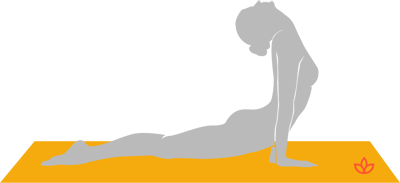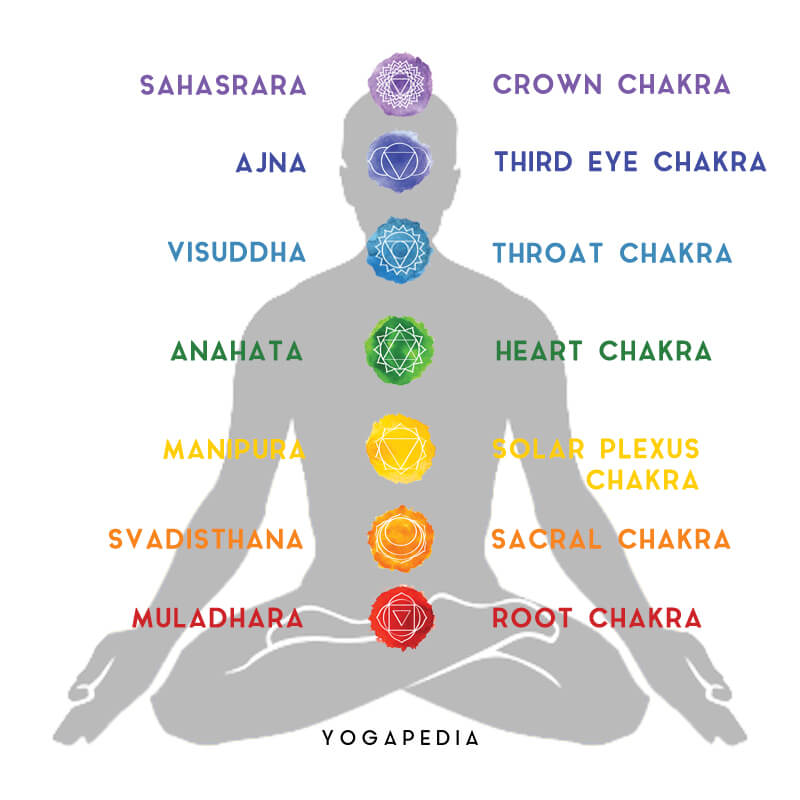Cobra Pose or Bhujangasana in Sanskrit is one of the most powerful and beneficial of all the poses.
When I first started practicing seated meditation, I thought that forcing myself to be rigid was part of the practice.
With more experience I understood that the right balance of flexibility and strength allows us to sit comfortably for extended periods, without being forceful, and that such relaxation is necessary for meditation.
Cobra pose can help us to gain the strength we need for comfortable, seated meditation.
The Importance of Cobra for Meditation
The Yoga Sutras of Patanjali say that yoga is the stilling of the fluctuations of the mind – Yogas chitta vritti nirodha.
A goal of the practice is to achieve self-mastery, and when we do, we are able to forget what is illusory in favor of what is real.
Read: Yogas Chitta Vritti Nirodha: Patanjali's Definition of Yoga, Explained
To do this, we need to be in control of our minds, rather than the other way around.
Many of us experience the mind like a wild mustang that drags us around, following our patterns, but not our will.
Meditation is a crucial tool in taming the mind and harnessing the power of attention.
For many of us, however, the act of sitting is itself so uncomfortable that it creates a cascade of thoughts: my back hurts, I’m not good at this, my knee is killing me, how can I focus on my breath with this pain in my shoulder, and so on.
Read: Befriend Your Chattering, Manic Mind & Meditate Through the Running Commentary
We practice asana in order to sit comfortably, without the constant distraction of mind-chatter about our aches and pains. We need to have muscles strong enough to hold us up without getting tired right away.
The posterior chain – those muscles that go from the base of the skull, down the back to the seat and beyond – is one of the most important muscle groups for determining whether we will be able sit comfortably in meditation.
The muscles of the back side of the body are weakened by poor posture and poor posture is an almost irresistible temptation when we are seated in a chair.
Therefore, most people need a daily practice of poses that counter-act the harm done by sitting in chairs, working on computers, and looking at phones and tablets.
Cobra pose, properly practiced, can be part of the remedy.
Read: 3 Hip-Opening Postures for People Who Sit All Day
How to Practice Cobra Pose for Better Meditation
There are several variations of cobra pose. All of the core variations start from lying on the belly with the hands underneath the shoulders and the forehead on the mat.
The tops of the feet press into the floor, with the legs engaged and the inner thighs rolling toward the ceiling (internal rotation of the thighs) to support and provide space for the lower back. The feet can be together (more challenging) or apart (still challenging).

In the variation sometimes called low cobra or half cobra (ardha bhujangasana), the yogi inhales to lift the forehead, neck, shoulders and collarbones, perhaps even some of the ribcage, away from the mat using the muscles of the back side of the body.

It is important to let the hands be relaxed to ensure that it is the back doing the lifting, not the hands pressing the body up.
The low belly engages to support the lower back and prevent the pelvis from tilting forward into the floor.
Cobra pose can be done as a static pose – inhaling up and then breathing there – or it can be done as a vinyasa, inhaling up and exhaling down.
There are expressions of cobra that involve deeper backbends and position the hands near the hips. Such variations are appropriate for some people that have considerable flexibility in the thoracic (chest) region, but they do much less to strengthen the back side of the body as the hands and arms take much of the weight of the torso.
Read: Bend Without Breaking: 10 Yoga Poses to Increase Flexibility
The Energetic Effects of Cobra Pose
Cobra pose is a backbend and helps to open the upper chest and throat. When done as low cobra, the pose creates a balance between effort and strength in the back and openness in the front side body.
Back-bending of this type is generally safe physically and balancing energetically.
Cobra encourages openness through the upper chest and neck while still supporting that opening with the back-side body, thereby balancing Anahata chakra (the heart) and Visuddha chakra (the throat). If the low belly is engaged and space maintained in the lumbar (lower back) region, cobra also helps to balance Svadisthana chakra at the navel, the home of attraction and aversion.

Read: 8 Yoga Asanas for Neck Pain
Final Thoughts
When cobra is performed using the muscles of the backside of the body, it can be practiced safely by most people.
Lifting the head, neck, and torso only as far as one can with the back protects the back and is the key to obtaining the strength benefits of the pose.
Although there are other poses that look fancier, there are few that are functionally better and safer than low cobra for building strength and increasing both flexibility and comfort during seated meditation.
During These Times of Stress and Uncertainty Your Doshas May Be Unbalanced.
To help you bring attention to your doshas and to identify what your predominant dosha is, we created the following quiz.
Try not to stress over every question, but simply answer based off your intuition. After all, you know yourself better than anyone else.